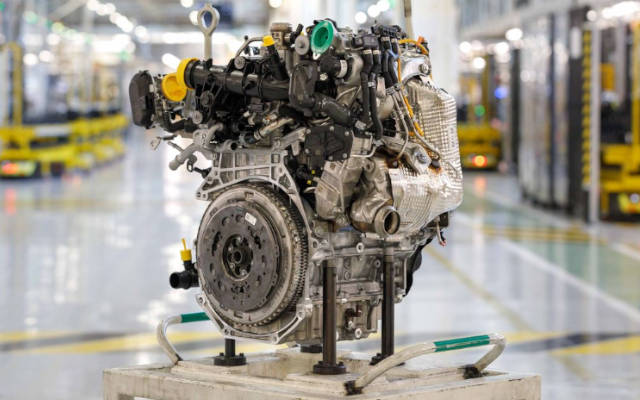Horse Powertrain: The Hybrid Trojan Horse

Horse Powertrain range-extender.
By EVWorld.com Si Editorial Team
In the race toward electrification, one company is quietly rewriting the rules. Horse Powertrain, a joint venture between Renault, Geely, and Saudi Aramco, is not chasing headlines with flashy EVs. Instead, it's building the world's most adaptable hybrid engines, designed to slip into the global auto fleet like a Trojan horse.
Born from Renault's ICE division and merged with Geely's powertrain assets, Horse operates 17 factories, including 8 in China. Its mission: supply hybrid and range-extender engines to automakers worldwide, especially those not ready - or able - to go fully electric. Saudi Aramco's 10% stake adds geopolitical intrigue. The oil giant isn't abandoning fossil fuels; it's hedging its bets by backing synthetic fuels and hybrid tech that keep liquid energy relevant.
At the heart of Horse's strategy is the C1 engine, also known as the C15. It's a compact 1.5L four-cylinder designed for range-extended EVs. Unlike traditional hybrids, the C1 doesn't drive the wheels. It runs at steady RPMs as a generator, charging the battery when needed. The electric motor handles all propulsion. This pure series hybrid setup simplifies packaging and reduces mechanical complexity. The entire unit is roughly the size of a briefcase, making it ideal for retrofitting EV platforms.
The C1 supports gasoline, ethanol, methanol, flex fuels, and synthetic fuels. It's engineered to meet Euro 7 emissions standards and is already being pitched to Chinese automakers like Leapmotor, Chery, and JAC. Renault and Geely are expected to follow. But as of now, no production models have been publicly confirmed to use the C1.
Software is the glue that binds this system. Horse's integrated control unit manages energy flow between the ICE, electric motor, and transmission. It supports multiple drive modes, predicts power needs, and ensures seamless transitions. Over-the-air updates allow automakers to refine performance and emissions post-sale.
Yet the hybrid path is not without controversy. A 2025 study found that plug-in hybrids are plugged in only 27% of the time, emitting up to five times more CO2 than official ratings suggest. If Horse's range extenders follow similar usage patterns, their environmental benefits may be more symbolic than real.
Saudi Aramco's involvement raises further questions. By backing hybrids and synthetic fuels, the company appears to support green mobility while preserving the ICE paradigm. It's a strategic move that keeps oil in the game, even as EVs gain ground.
So which technology will win? 500-mile battery EVs are surging ahead, driven by falling battery costs, expanding fast-charging networks, and regulatory pressure. But EREVs like those powered by Horse may thrive in the short term, especially in regions with weak infrastructure and strong range anxiety.
Horse Powertrain isn't just selling engines. It's selling time - time for automakers to transition, for oil producers to adapt, and for consumers to ease into electrification. Whether that time is well spent or wasted depends on how the world drives tomorrow.
Sources
- Finimize: Renault and Geely's Engine Venture
- Transport & Environment: PHEV Emissions Study
- Aramco Newsroom: Horse Powertrain Investment
- IAA Mobility: Horse Powertrain Future Hybrid Concept
Original Backlink
Views: 292
Articles featured here are generated by supervised Synthetic Intelligence (AKA "Artificial Intelligence").
